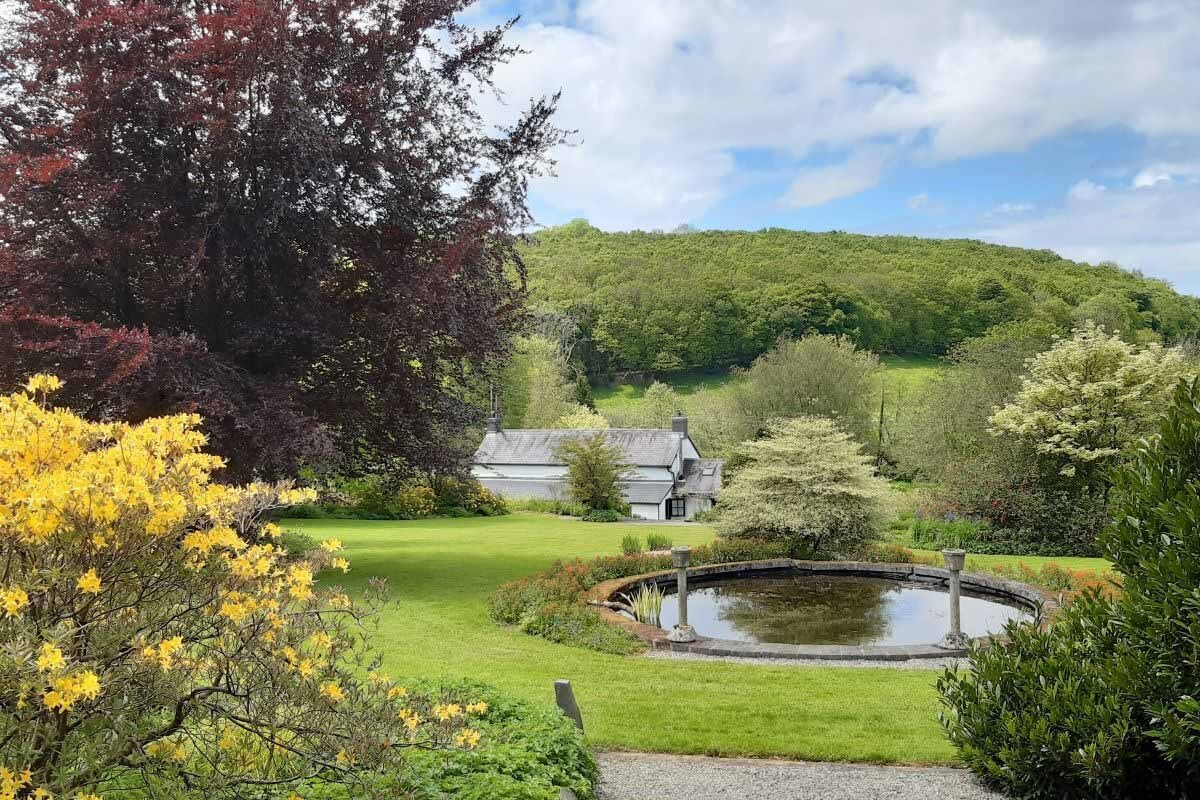
Cae Hir is one of the most beautiful gardens I have visited and if you ever get the chance to see it, I would absolutely recommend you go. It sits on the side of the valley of the little Bran river, near Lampeter (Llanbedr Pont Steffan) in west Wales.
Cae Hir means ‘Long Field’ and is pronounced “Keye (to rhyme with ‘eye’) Heer”. It was bought by the late Wil Akkermans in 1983. Akkermans was a Dutch teacher of French and he moved to Wales with his family in a complete change of career. At the time, as suggested by the name, Cae Hir wasn’t a garden – most of it was a bare, sloping field (the ‘before’ and ‘after’ photos on the garden website are quite astonishing).
Akkermans had the imagination, energy and enthusiasm to see and fulfil its potential, intending to make it a garden to open to visitors. He didn’t, however, have much money to splash after having bought the land and the house for his family. His wife, a physiotherapist, became the breadwinner, supporting him and their three children for many years whilst Akkermans toiled to make a garden from the 5-acre site.
His ingenuity in the face of limited funds meant he found ways to ‘furnish’ the garden with hard structures in as economical a way as possible. As well as natural stone he found on the site, he used concrete, scaffolding poles, recycled metal objects and even breezeblocks to construct steps, seats, pergolas, plant supports and other features. Such is the maturity and exuberance of the garden now that these structures do not ‘jar’, but blend in and greatly add to the interest.
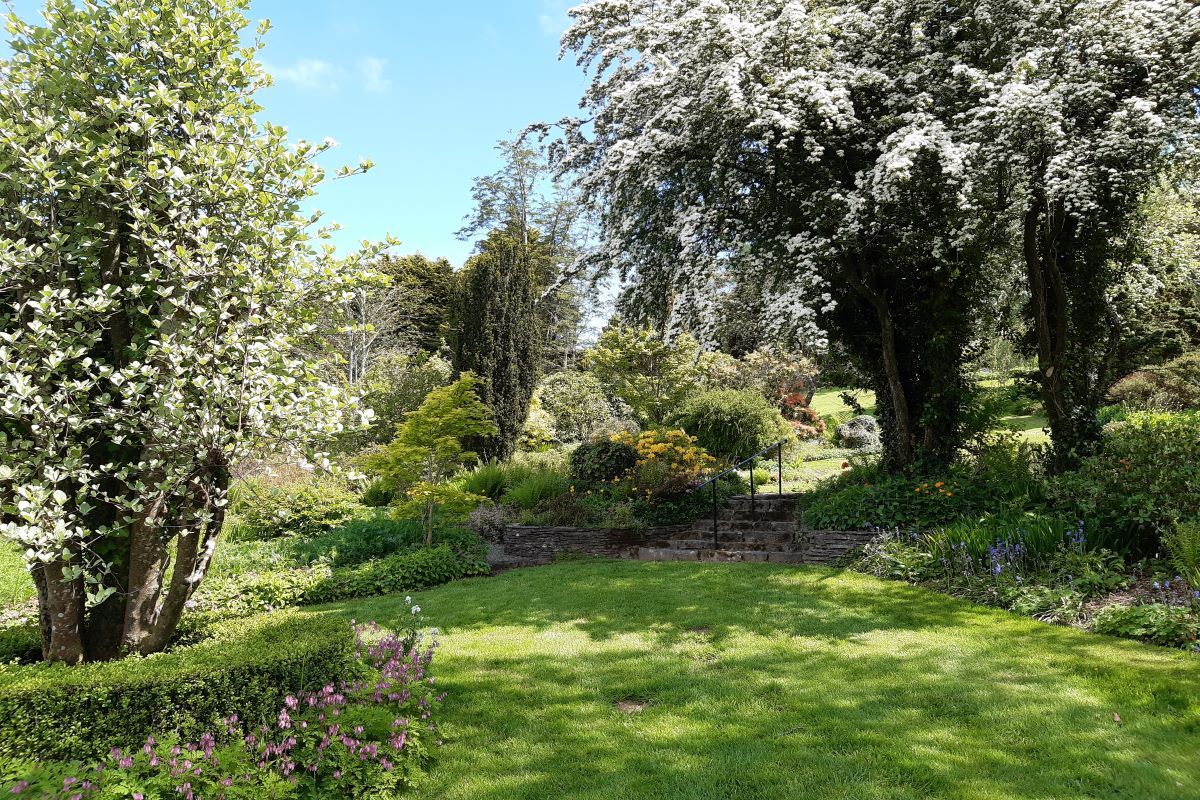
The approach to the garden is via a gravelled area, where there is a tea-room run by Akkermans’ daughter Julie (let’s face it, a day out isn’t a day out unless there is tea and cake …). You don’t see much of the garden until you follow a narrow path beyond the hedge, through an area where – typically in this garden – plants of all kinds have been allowed to grow together where they have seeded themselves. At the time of our visit, bluebells were mixing with orange poppies so gloriously as to resemble an Impressionist painting.
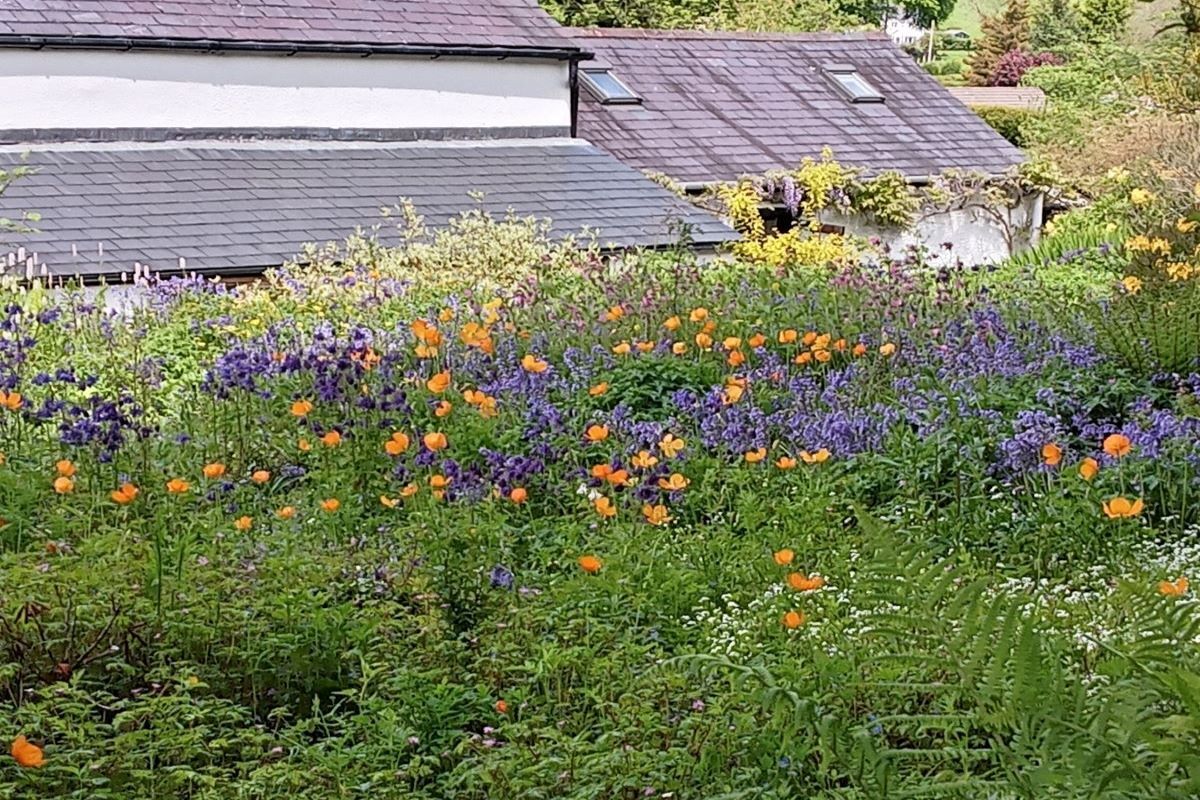
From here, the view of the garden begins to open out. And it is beautiful. The wide grass paths slope up the side of the valley, looping backwards and forwards around trees, a circular pond, crescent-shaped hedges and other features before descending to a more formal gravelled area, where sun-loving plants enjoy the heat. Other parts of the garden are in the shade of large conifers underplanted with ferns and self-seeded white camassias, whilst yet other areas lie in the dappled shade of magnificent trees of all kinds.
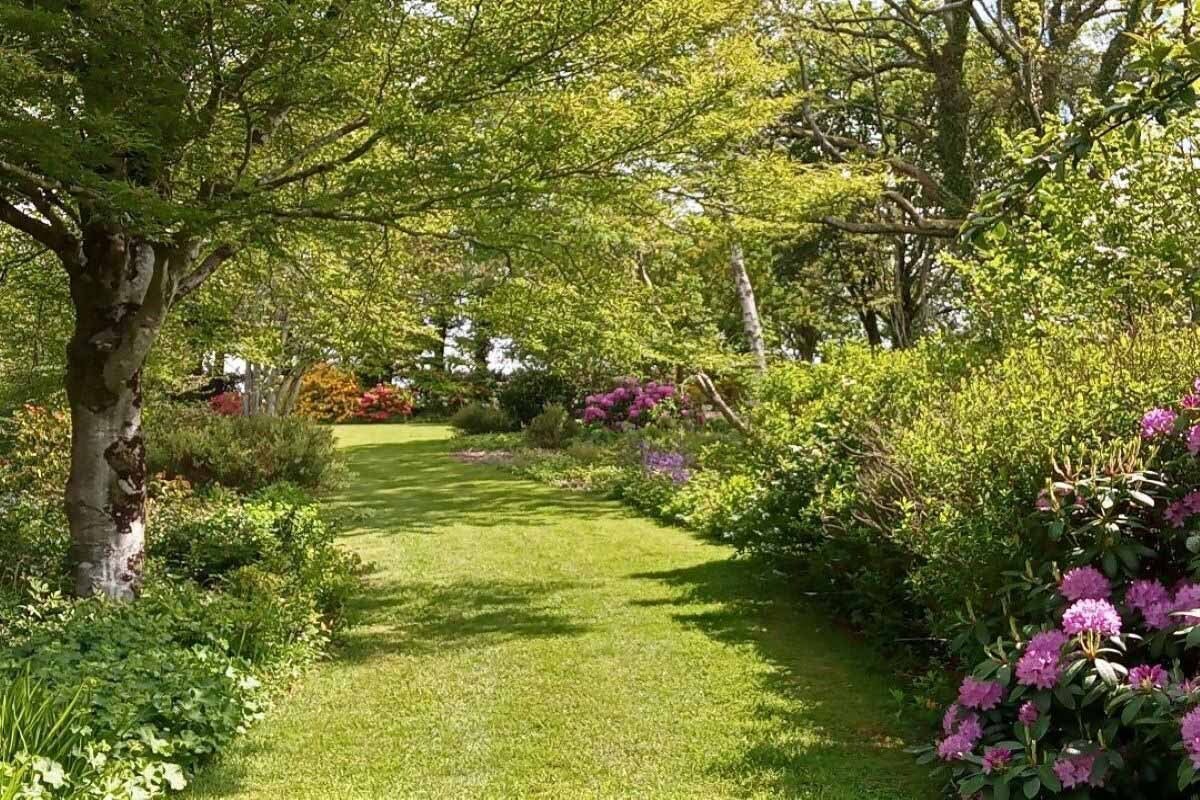
“Good gardening is being unnatural with nature’s consent”
So said Akkermans, apparently, in 1994; his approach – quite unusually, for the times – was that he would work as much as possible alongside nature. He chose trees and plants which would suit the climate and the soil but, over the years, he also began consciously to use fewer highly bred varieties, instead selecting plants more akin to the original species. For example, he often chose single-flowered varieties over double ones because their nectar is easier for bees and other insects to access. His approach is still evident now, in that many plants which more conventional gardeners would consider to be weeds to be removed,are allowed to remain and to self-seed if they are useful for wildlife. It means the garden may not always appear as ‘tidy’ as some might prefer, but the overall effect is beautiful.
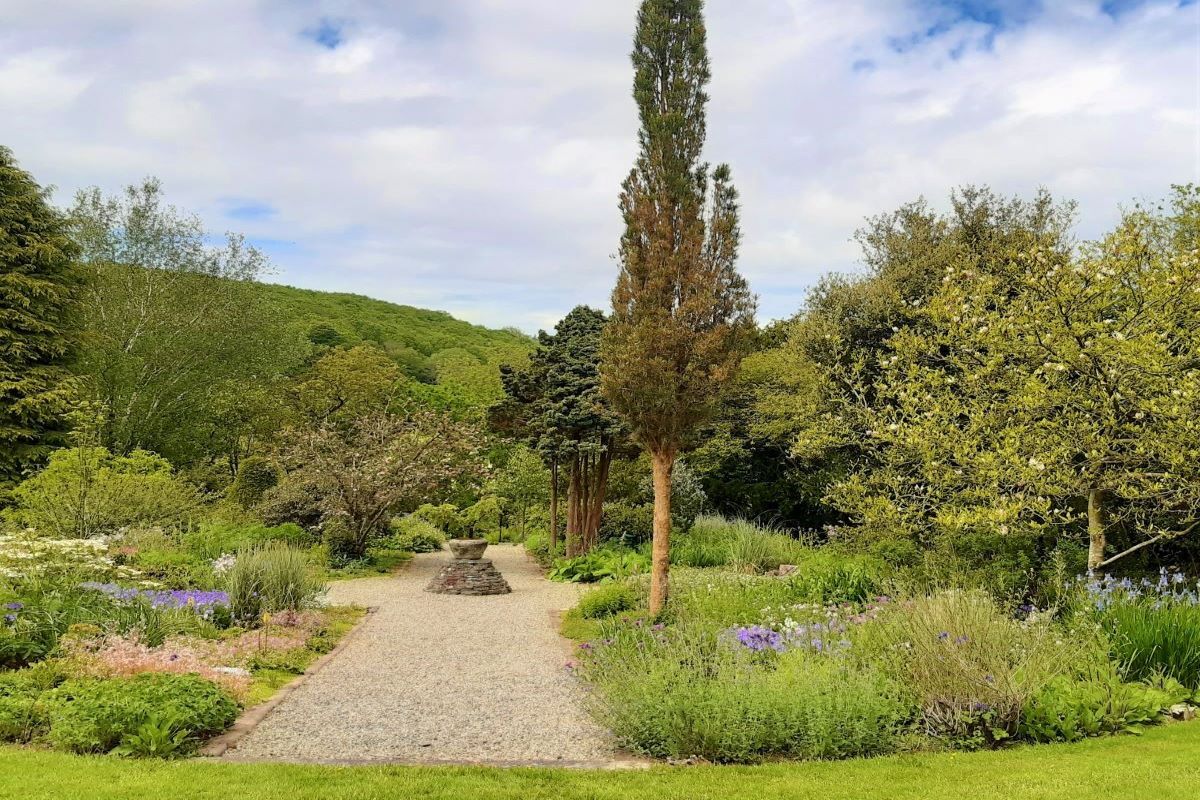
He clearly had a painterly eye when it came to putting colourful plants together. There are many areas of the garden where plants in the same colour range are growing side by side, complementing each other: a gravelled area with a central arrangement of stone obelisks is surrounded by a large, circular copper-beech hedge, and the trees and shrubs around it – acers and the like – are similar colours. In bright sunlight the dark garnet and ruby colours seem almost to smoulder.
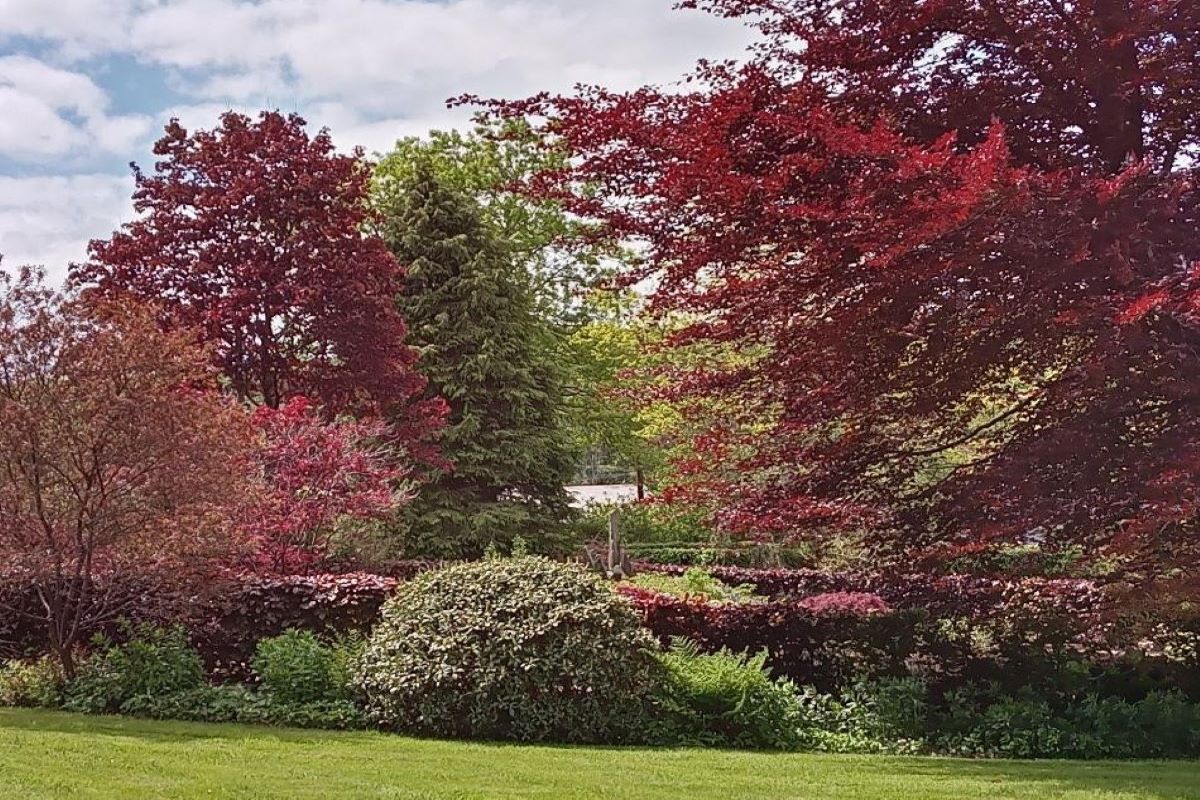
On the opposite side of the road from the main garden is the ‘Wild Garden’, where nature is allowed an even freer hand. It is a beautiful, peaceful area and on Sundays is designated a ‘Silent Space’ in which visitors are asked to turn off their phones and “let nature do the talking”. How refreshing.
Following Wil Akkermans’ death last year, the garden is now looked after by his son Stuart, who began working alongside his father in the early 2000s and gradually took over as Wil’s health sadly began to fail. Stuart is continuing the practices put in place by his father, allowing nature to dictate much of the gardening work. It is astonishing that a garden this size can be maintained by one person but, long ago becoming one of the seven “Great Gardens of West Wales”, it remains a tribute both to its creator and those who follow him.





